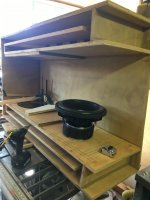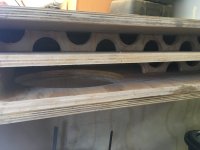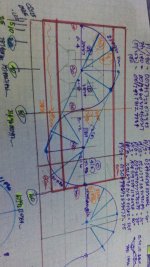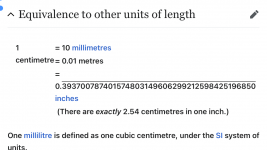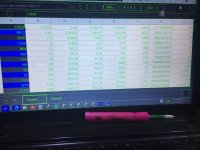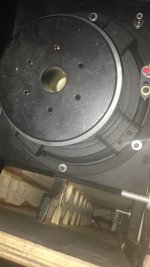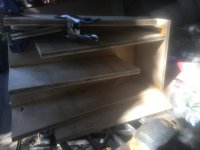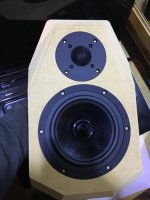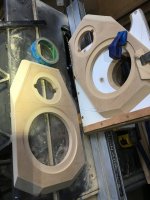Everything is everywhere now 🙂
https://phys.org/news/2017-08-astro...utm_medium=email&utm_campaign=weekly-nwletter
https://phys.org/news/2017-08-astro...utm_medium=email&utm_campaign=weekly-nwletter
Attachments
I dont have a ‘WAF’. She is equally as tolerant or has the same perspective as far as: too big, too ugly, too in the way stupid, etc. for the most part??. Plus every man needs to understand for every sheet of plywood he’s gonna run across the tablesaw for subwoofers or Full range, etc he needs to understand for every sheet he must put an equal and opposite amount through it as shoe closet shelving, small chicken coup? Crazy cat lady obstacle course, A subwoofer that’s low profile and indestructible in her vehicle… 😂My friend, I know all about horns:
View attachment 1059736
I know all about symmetry and resonances:
View attachment 1059737
But the main problem in loudspeakering, at least at the low frequencies is the room:
View attachment 1059738
If we were serious about sound, we would build loudspeakers in to the wall. We would damp the walls. Obviates all the problems except cone breakup and time delay and to some extent, dispersion and power response.
I have heard systems that deal with these issues. It is not cheap and meets with little WAF.
Wow😱👍🏻Everything is everywhere now 🙂
https://phys.org/news/2017-08-astro...utm_medium=email&utm_campaign=weekly-nwletter
Nice cabinets 🙂
Or at last they promise to be nice when finished.
Not too sure about the calculations shown on the last picture though.
You show results or factors with 16 significant digits ... yet I very much doubt you can cut plywood with better precision than 1 mm, so 5 digits, maybe 6 tops should be more than enough to describe cabinet parts cut on a tablesaw.
Even if you could cut with that precision or better, surface roughness alone would smooth and absorb/kill any measurement adjustment ... let alone wood size variation according to ambient humidity.
Or at last they promise to be nice when finished.
Not too sure about the calculations shown on the last picture though.
You show results or factors with 16 significant digits ... yet I very much doubt you can cut plywood with better precision than 1 mm, so 5 digits, maybe 6 tops should be more than enough to describe cabinet parts cut on a tablesaw.
Even if you could cut with that precision or better, surface roughness alone would smooth and absorb/kill any measurement adjustment ... let alone wood size variation according to ambient humidity.
Thank God for simulation. Details we would never ever know or be able to see or understand exist at 23.11475*CNice cabinets 🙂
Or at last they promise to be nice when finished.
Not too sure about the calculations shown on the last picture though.
You show results or factors with 16 significant digits ... yet I very much doubt you can cut plywood with better precision than 1 mm, so 5 digits, maybe 6 tops should be more than enough to describe cabinet parts cut on a tablesaw.
Even if you could cut with that precision or better, surface roughness alone would smooth and absorb/kill any measurement adjustment ... let alone wood size variation according to ambient humidity.
Horn response is using 344.0 m/sec so 860 is actually 864.If(fOr any reason) we were looking for a generic baseline as (345.6 being the speed of sound) for any reason , but to just have an actual value assigned to use (generic) it just so happens that pans out all the way to the math of the unique constant 05236 (pi divided by six) which is 1/2 the 104.72 cm In an offset driver TL that perfectly aligns and then fills that (3 x 1/4) harmonic, void at the top of the bandwith. And all of these things are measurable in RTA in un smoothed detail, to see where response and the phase , impedance landmarks give the same information as seen in the sim already. The rest of it is just to look further and further in the details and build more and more with other drivers and keep confirming the consistency exists Instead of something fouling it up, Like a flare rate or a taper, mass loading the exit..And the details that you mentioned
That was how I first learned how to line these up the right way by taking one that screwed up and mass loading the other side until it stopped causing this horrific nasty ringing resident death call😂😂 Which is found at the top of the bed within a lot of the Paraflex models if you use them indoors with a boundary condition or something the stirs up the discontinuity ? At the top of the bed with some nasty material and it can cause some funky ringing or worse. That often ends up at 86.4 Hz(in the spring in California) because all these things are tuned at/around 30 Hz.
But you get rid of that garbage when you purposely align them instead of that generic Paraflex issue when you purposely align them instead.
For a moment this looked like Warp 5.6 😉23.11475*C
Whats warp 5.6??😳For a moment this looked like Warp 5.6 😉
Attachments
It is a science fiction reference to multiples of the speed of light, on a logarithmic scale.
Cool!!!!It is a science fiction reference to multiples of the speed of light, on a logarithmic scale.
So it might even be called a dB C scale, a logarithmic one based on C , the speed of light.
Not to be confused with our standard dB C scale used in Acoustics
https://www.sciencedirect.com/topics/engineering/c-weighting
No confusion should exist, based on context, us being in DIY AUDIO, so the Audio related one "should" be presumed automatically as valid, but since at least in this thread we seem to be wandering more and more into DIY Numerology, maybe a clarification should be needed.
One has to be careful what one says sometimes:

What is going on here? 🤔
I think this is some sort of Spy outside the famous Harbeth loudspeaker research faciilty in the woods of Sussex:
https://harbeth.co.uk/
Clearly doing clandestine listening measurements. But up to no good, IMO.
What is going on here? 🤔
I think this is some sort of Spy outside the famous Harbeth loudspeaker research faciilty in the woods of Sussex:
https://harbeth.co.uk/
Clearly doing clandestine listening measurements. But up to no good, IMO.
1960s, Star Trek, trouble with tribles…The warp speed thing reminded me of all the things in Star Trek that ended up becoming something this is the last few years
A)Cancelled freq in high order qw,
B)cm of 1/4 length in pipe with closed end,
C)inch equivalent,
D)1/254 equivalent to length as cm.
E) reciprocal 1/x of 3750/7 and 187 shift.(3937 total)
G) actual speed of light equivalent.
H) 22/7 equivalent
I) x2 row @ 1/4 wave freq
j)k) Beyond one 3/84 in the double Beyond one 3/84 in ^^ direction..
A)Cancelled freq in high order qw,
B)cm of 1/4 length in pipe with closed end,
C)inch equivalent,
D)1/254 equivalent to length as cm.
E) reciprocal 1/x of 3750/7 and 187 shift.(3937 total)
G) actual speed of light equivalent.
H) 22/7 equivalent
I) x2 row @ 1/4 wave freq
j)k) Beyond one 3/84 in the double Beyond one 3/84 in ^^ direction..
Attachments
Last edited:
Actually it's Star Trek Tribbles, which have Exponential growth. Unless you refer to Pythagorean Triples! 3-4-5 an' all that. 😀1960s, Star Trek, trouble with tribles… snip.
Anyway, you seem to be determined to Build your Dream Quarter Wave Transmission line loudspeaker.
How hard can it be?
I am more Closed Box myself.
And I can commend no finer example than the Petrol Can speaker:
Cheap always works for me!
I also built my own Dream PC:
https://web.archive.org/web/2005111....org/public/stories/2001.8.5.172749.2140.html
Still works, and costs nothing to maintain. https://ubuntu.com/
1960s, Star Trek, trouble with tribles…The warp speed thing reminded me of all the things in Star Trek that ended up becoming something this is the last few years
A)Cancelled freq in high order qw,
B)cm of 1/4 length in pipe with closed end,
C)inch equivalent,
D)1/254 equivalent to length as cm.
E) reciprocal 1/x of 3750/7 and 187 shift.(3937 total)
G) actual speed of light equivalent.
H) 22/7 equivalent
I) x2 row @ 1/4 wave freq
j)k) Beyond one 3/84 in the double Beyond one 3/84 in ^^ direction..
I need a dream PC!!!!!!!Your TL is awesomeActually it's Star Trek Tribbles, which have Exponential growth. Unless you refer to Pythagorean Triples! 3-4-5 an' all that. 😀
Anyway, you seem to be determined to Build your Dream Quarter Wave Transmission line loudspeaker.
How hard can it be?
View attachment 1060109
I am more Closed Box myself.
And I can commend no finer example than the Petrol Can speaker:
View attachment 1060110
Cheap always works for me!
I also built my own Dream PC:
https://web.archive.org/web/2005111....org/public/stories/2001.8.5.172749.2140.html
Still works, and costs nothing to maintain. https://ubuntu.com/
Attachments
Post more pictures of anything you built that looks cool👍🏻👍🏻
Attachments
-
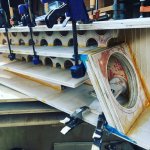 A43D7622-B249-4A54-8C87-F57A36A7C43A.jpeg723.8 KB · Views: 65
A43D7622-B249-4A54-8C87-F57A36A7C43A.jpeg723.8 KB · Views: 65 -
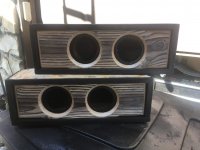 EC6B8DB0-447F-45F8-A86C-03F0658D7CD5.jpeg210.6 KB · Views: 64
EC6B8DB0-447F-45F8-A86C-03F0658D7CD5.jpeg210.6 KB · Views: 64 -
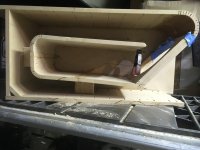 865FB43F-444F-4DC8-9D51-1AF08BB5B080.jpeg660.6 KB · Views: 61
865FB43F-444F-4DC8-9D51-1AF08BB5B080.jpeg660.6 KB · Views: 61 -
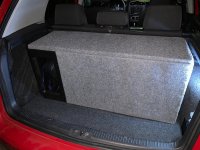 00E51F9E-FBF2-4901-99B3-7E9A0687B037.jpeg1,008.1 KB · Views: 74
00E51F9E-FBF2-4901-99B3-7E9A0687B037.jpeg1,008.1 KB · Views: 74 -
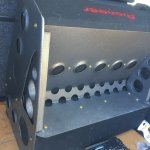 57971E5C-6749-4237-A6F7-5BCBF5F56F36.jpeg767.9 KB · Views: 77
57971E5C-6749-4237-A6F7-5BCBF5F56F36.jpeg767.9 KB · Views: 77 -
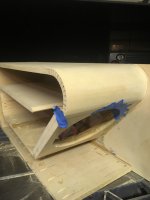 E5066896-C2BD-411E-817E-8EA446269F23.jpeg505.6 KB · Views: 69
E5066896-C2BD-411E-817E-8EA446269F23.jpeg505.6 KB · Views: 69
That's assuming one tribble, multiplying with an average litter of ten, producing a new generation every twelve hours over a period of three days.which have Exponential growth.
This was one of my thought experiments based on a WLM Stella:Post more pictures of anything you built that looks cool👍🏻👍🏻
https://www.diyaudio.com/community/threads/wlm-stella-clone.212020/
I thought one woofer good, two better:
You can hardly see the join. Reflex loading.
Reminds me of this classic:One has to be careful what one says sometimes:
View attachment 1060085
What is going on here? 🤔
I think this is some sort of Spy outside the famous Harbeth loudspeaker research faciilty in the woods of Sussex:
https://harbeth.co.uk/
Clearly doing clandestine listening measurements. But up to no good, IMO.
That was quite enjoyable in a Military Sense. 🙂
I am a Man of Peace myself. But am alert to those who aren't. Perhaps they didn't have the happy childhood that I enjoyed. Thus damaged and Violent?
Which leaves me in the middle. I sympathise most with the Mercians:
Leofric never loses his head.
I am a Man of Peace myself. But am alert to those who aren't. Perhaps they didn't have the happy childhood that I enjoyed. Thus damaged and Violent?
Which leaves me in the middle. I sympathise most with the Mercians:
Leofric never loses his head.
what is it about 240 cm and then 120 cm or after which when fed from 1/8 and 1/16 of that in each of them from the same driver you get this cancellation it starts at 864 Hz?
The same thing can be seen starting at 432 in some cases where are you abbreviate That into similar proportions.
First, the Easiest way to see something and make an eventual connection is through the exact number required in offset driver mode to perfectly fill the odd harmonics cancellation at the top of the band with for three times whatever you chosen for your fundamental frequency which is the 1/4 harmonic of a 4/4 piece of a full
13824/.0625/4 is 345.6.
345.6/.25/4 is 86.4.
8.64/1/4 is 21.6.
21.6/4/4 is 1.35.
13.5/16/4 is 0.2109375…
…?
set number is always going to be a product of 0.34962349602 x The wave length used for quarter wave length used for 1/4 fb.
but in a 300 cm qwpipe that number is 104.76 cm. And thats Pi when multiplied by three. For the .349602 is byFor the .349602 is pi/9.
If you look at these things in degrees do you have radians as reference.
1* is 0.01746317460317
1.5* is 0.0261904761904761
2 * is 0.0349602349603
2.25 is 0.0392857142857
2.5 is 0.04365
3 is 0.05238095238
3.5 is 0.061111111
4 is 0.69867142
5 is 0.0873
5.5 is 0.07875
6 is 1.0476190476
7 is 1.2222222222
7.5 is 0.013095238
8 is 1.396825390
9 is 1.57142857…
14 is 2.4444444
21 is 3.6666666
24 is 4.1904761904….
So 300 is 5.238095238
104.76 is also 600…
pi is 3.142857.(180). 2 pi is 6.2867..(360)
5.238 minus 1.0476 is 4.1904 (240 , and volume of a sphere when r is 1.)?
what is the connection here?
The same thing can be seen starting at 432 in some cases where are you abbreviate That into similar proportions.
First, the Easiest way to see something and make an eventual connection is through the exact number required in offset driver mode to perfectly fill the odd harmonics cancellation at the top of the band with for three times whatever you chosen for your fundamental frequency which is the 1/4 harmonic of a 4/4 piece of a full
13824/.0625/4 is 345.6.
345.6/.25/4 is 86.4.
8.64/1/4 is 21.6.
21.6/4/4 is 1.35.
13.5/16/4 is 0.2109375…
…?
set number is always going to be a product of 0.34962349602 x The wave length used for quarter wave length used for 1/4 fb.
but in a 300 cm qwpipe that number is 104.76 cm. And thats Pi when multiplied by three. For the .349602 is byFor the .349602 is pi/9.
If you look at these things in degrees do you have radians as reference.
1* is 0.01746317460317
1.5* is 0.0261904761904761
2 * is 0.0349602349603
2.25 is 0.0392857142857
2.5 is 0.04365
3 is 0.05238095238
3.5 is 0.061111111
4 is 0.69867142
5 is 0.0873
5.5 is 0.07875
6 is 1.0476190476
7 is 1.2222222222
7.5 is 0.013095238
8 is 1.396825390
9 is 1.57142857…
14 is 2.4444444
21 is 3.6666666
24 is 4.1904761904….
So 300 is 5.238095238
104.76 is also 600…
pi is 3.142857.(180). 2 pi is 6.2867..(360)
5.238 minus 1.0476 is 4.1904 (240 , and volume of a sphere when r is 1.)?
what is the connection here?
Last edited:
- Home
- Member Areas
- The Lounge
- the speed of light and the 1/4wave speaker

